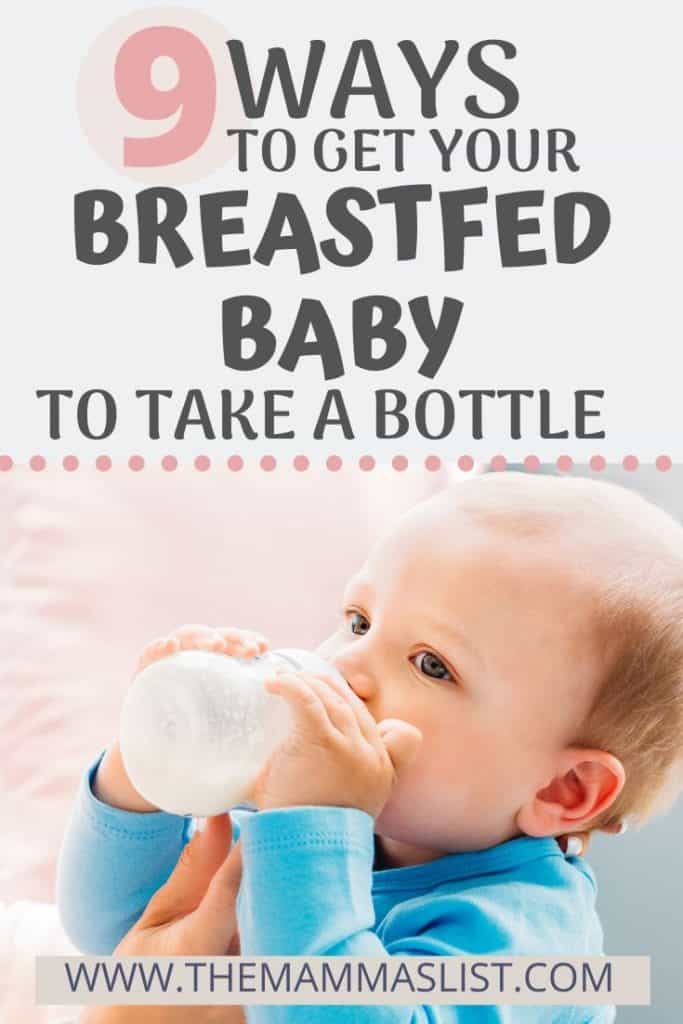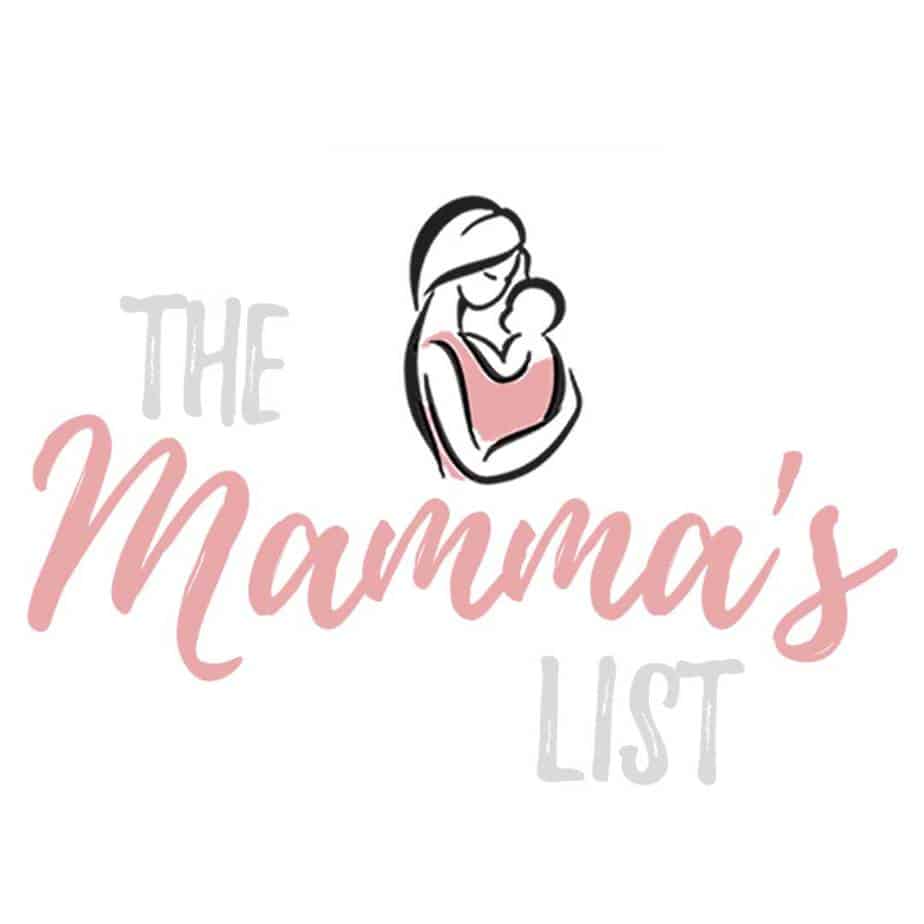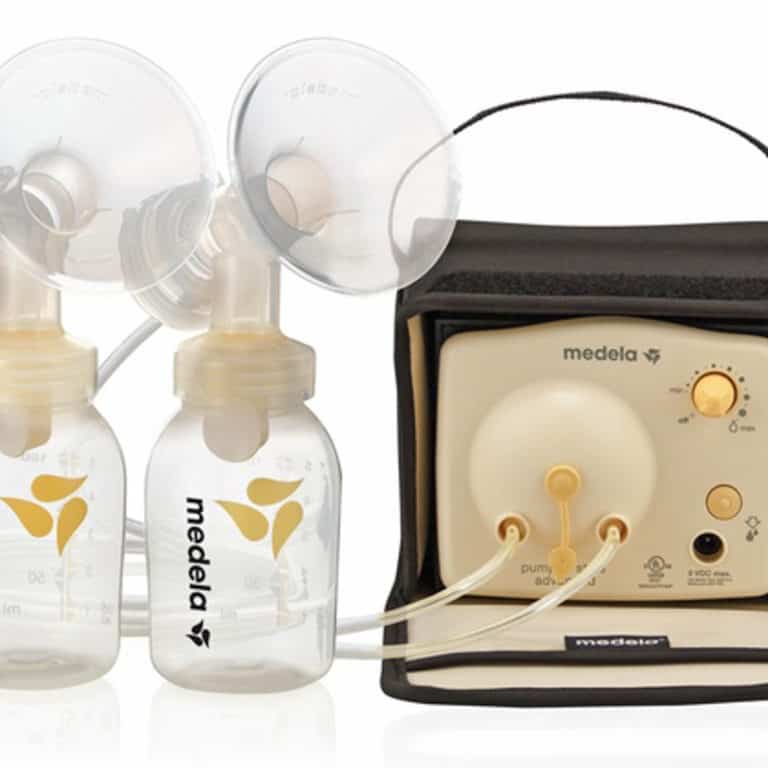Nine ways to get your breastfed baby to take a bottle
Picture this scenario: you’re a new mom who fought through the trenches of early breastfeeding to get a well established nursing relationship. Your nipples no longer feel like they’re on fire every time your baby eats. Your supply is finally regulating a little so you aren’t engorged all the time. You survived the wars and are confident in your ability to feed your baby. Congratulations! It’s about time for you to head back to work so you want to begin bottle feeding in prep for the transition. Bam! Your breastfed baby won’t take a bottle. And life tilts a little on it’s axis.
This post probably contains affiliate links. That means if you buy something using one of my links I may receive a small commission – at no additional cost to you! How cool is that? It’s kind of boring, but feel free to read my full disclosure if you want more info
Many moms report having the problem of getting a breastfed baby to take a bottle. A lot of times it’s early on, and many times it’s right when mom is heading back to work. The key here is not to panic. There are lots of things you can try to get your baby to take a bottle, and eventually one of them will work.
In extreme cases babies may reverse cycle, and nurse more at night to make up the calories they aren’t getting during the day. Since you’re likely going back to work, this isn’t ideal. Keep at the list below and eventually your baby will come around.
Seriously. They won’t starve themselves. You may have extreme anxiety but your baby is just fine.
Establish breastfeeding, but don’t wait TOO long to get your breastfed baby to take a bottle
The key here is to wait until breastfeeding is well established (no earlier than 2-4 weeks) but not so long that your baby has a really strong preference for the breast. We did our first bottle at two weeks, but only did about one bottle per week until closer to two months. This isn’t a rule, it’s just what we did.
Waiting 2-4 weeks is what’s recommended by most lactation consultants and pediatricians.
If you can’t get your breastfed baby to take a bottle, have dad (or another caregiver) try when mom is out of the house.
This has to do with mom’s proximity more than anything else. Many babies can sense or smell when their mothers are in the house, and they’ll refuse a bottle. If mom’s even a remote option, that baby is NOT excited for the bottle.
If she’s out of the house and your baby is ready to eat you have a much better shot of getting the baby to take a bottle.
Use a nipple that mimics breastfeeding
Use a slow flow nipple to mimic the feel of breastfeeding, and implement paced bottle feeding to make the experience more like nursing.
Ensure that the bottle-feeding experience mimics breastfeeding in every way possible. Using the principles of paced feeding will also help prevent bottle preference. Although if you’re reading this article you probably aren’t worried about that at this point 🙂
Try a variety of bottles and nipples
There are a ton of varieties of bottles and nipples, and your baby will like one of them. Check out my top recommendations below, and if you don’t have the full gamut of baby necessities yet, don’t forget to read the related post on everything you’ll need for feeding and home.
Related: Baby Registry Guide – Feeding Essentials
Here are two options that are great for breastfed babies:
Lansinoh Bottles

Comotomo Bottles

Hold your baby in a different position than you’d normally nurse
As part of paced bottle feeding and for getting your breastfed baby to take a bottle, hold her in a new position. For paced feeding ensure she’s sitting up straight.
What you want to avoid is the nice cradle position if that’s how she normally nurses. If she’s with mom and cuddled up, chances are she’s going to expect to nurse. Try facing outward, sitting up straight or putting her in a high chair when you offer the bottle.
Offer the bottle when baby isn’t incredibly hungry – when they’re happy and relaxed
It might seem counter intuitive to offer the bottle before your baby is hungry, but this is when they’re in a good mood. Offering the bottle when baby is still happy means she won’t be too worked up or angry to take it.
If you wait until your baby is already running on empty, she’s probably already fussy and will want to be fed. Now. Missing the slightly hungry but still happy window reduces the odds of your baby wanting to take the bottle.
Put some breastmilk on the tip of the bottle to entice and encourage latching
We did this to show our daughter what she’d be getting once she took the bottle. Sometimes just reminding babies what the end game is will convince them to take the bottle.
If you haven’t tried or successfully bottle fed yet your baby might just not be familiar with the whole purpose. As a last resort, I would even start off by nursing my baby, ensuring she was relaxed and happy.
I then swapped in the bottle when we were halfway through the session so she already knew what we were doing. She wasn’t happy about it, but this was the only way we were able to get her back on bottles.
Want more tips and tricks to make life easier as a new mom? Drop your email below for access to our resource library!
Change up the bottle temperature
Don’t take this as license to go microwave your bottle and get it hot. {Side Note: you should never microwave bottles because the milk will heat in patches, possibly burning your baby.}
BUT – sometimes making the bottle a little warmer or a little cooler is enough to interest your baby in what’s inside. Many babies will eventually take milk that’s cold out of the refrigerator. We always had to warm ours to at least room temperature, but changing it up is worth a shot.
Remain calm and keep trying
Finally, the most important thing to remember when trying to get your breastfed baby to take a bottle is that this is temporary. It’s a phase that you’ll get through like all the others. Remaining calm and continuing to try different tactics is key.
It’s a really hard phase, but your baby knows better than to starve herself. Unfortunately, I’ve heard that some babies will begin reverse cycling, eating more at night and less during the day. To prevent this, just keep offering the bottle until both bottle feeding and breastfeeding are well established.
Related: Everything you wanted to know about bottle-feeding a breastfed baby
I hope you found this post informative! Feel free to pin it to reference or share for later!









